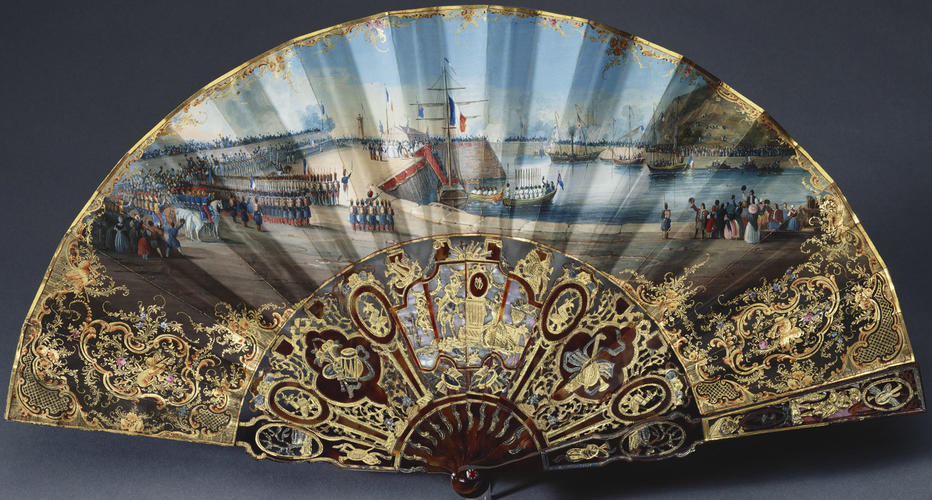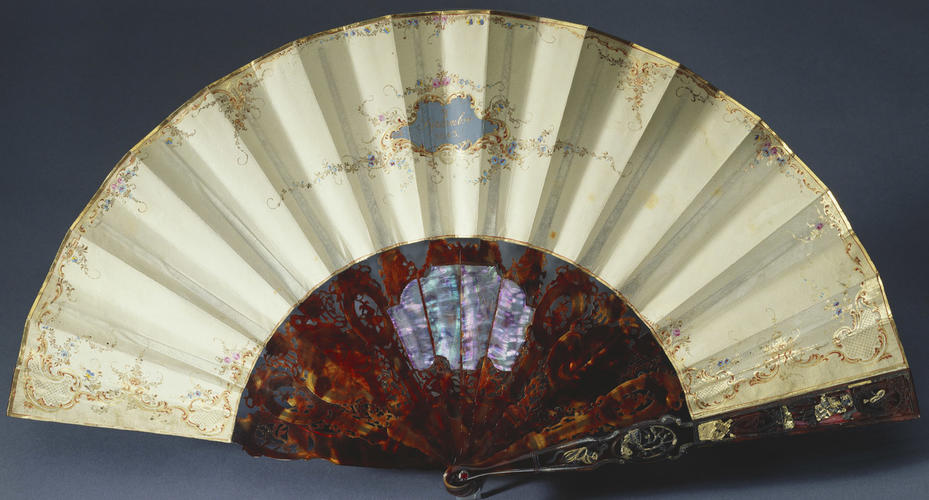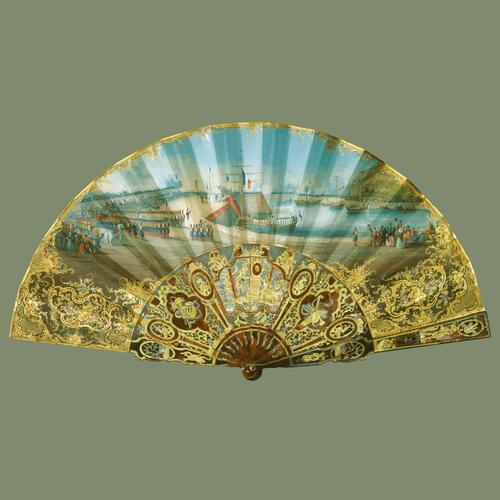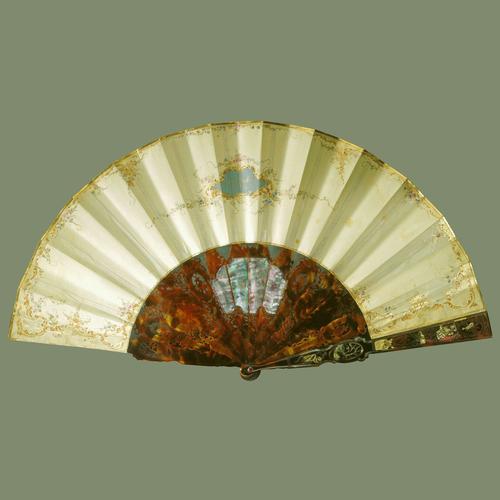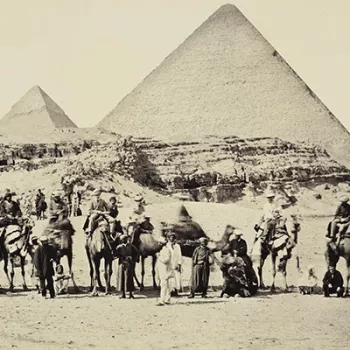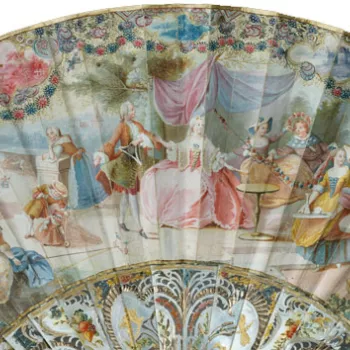Fan depicting 'Queen Victoria's arrival at Treport, 1843' 1843
Paper leaf; guards (identical) and sticks of carved tortoiseshell backed with mother-of-pearl (2 + 12) | 27.8 cm (guardstick) | RCIN 25344
-
This fan was created as a memento of the start of Queen Victoria’s first overseas visit, in 1843. From 2 to 7 September the Queen and Prince Albert were the guests of Louis-Philippe, King of the French, and his wife Marie-Amélie, at the Château d’Eu, their country residence close to Tréport. The British royal party arrived in the late afternoon of 2 September on board the newly completed royal yacht Victoria and Albert (seen here, with its central steam funnel, to right of centre). Queen Victoria described how Louis-Philippe came to collect them from the yacht in the French royal barge:
'[accompanied by] Aumale, Montpensier, Augustus, M. Guizot, Lord Cowley, and various officers and ministers. The good kind King was standing on the boat, and so impatient to get out that it was very difficult to prevent him, and to get him to wait till the boat was close enough. He got out and came up as quickly as possible, and embraced me warmly. It was a fine and really affecting sight, and the emotion which it caused I shall never forget . . . The King expressed again and again how delighted he was to see me. His barge is a very fine one, with many oars, and the men in white, with red sashes, and red ribbons round their hats . . . The landing was a fine sight, which the beauty of the evening, with the setting sun, enhanced. Crowds of people, (all so different from ours), numbers of troops (also so different from our troops), the whole Court, and all the authorities, were assembled on the shore. The King led me up a somewhat steepish staircase, where the Queen received me with the kindest welcome, accompanied by dearest Louise [Queen of the Belgians], Hélène [the recently widowed Duchesse d’Orléans], in deep mourning, Françoise [Princesse de Joinville], and Madame Adélaïde. All this - the cheering of the people, and of the troops, crying ‘Vive la Reine! Vive le Roi!’ - well nigh overcame me . . . The King repeated again and again to me how happy he was at the visit, and how attached he was to my father and to England.'
Queen Victoria’s fond association with the French royal family was greatly strengthened by the marriages of three of Louis-Philippe’s children to members of the Saxe-Coburg-Gotha line. In 1832 the eldest daughter, Louise, had married Leopold I, King of the Belgians, who was uncle of both Queen Victoria and Prince Albert. Members of Louis-Philippe’s extended family gathered at Eu for the visit of Queen Victoria and Prince Albert.
The fan leaf records the moment on 2 September when Queen Victoria and Prince Albert were formally greeted by their French hosts on the quay at Tréport. The same event - but from different viewpoints - was recorded in two watercolours by Eugène Lami in the Royal Collection. These belong to the series of thirty-two watercolours recording the 1843 visit, presented by Louis-Philippe to Queen Victoria at the time of his return visit, to Windsor, in October 1844. All these watercolours, by artists such as Isabey, Morel-Fatio and Fort - as well as Lami - remain in the Royal Collection. It is likely that this fan was presented to Queen Victoria at the same time, in October 1844. Its original box, bearing the trade label of Vanier of Paris, has also survived.
Text adapted from Unfolding Pictures: Fans in the Royal Collection 2005Provenance
Presented by Marie-Amélie, Queen of the French, to Queen Victoria, ?1844
-
Creator(s)
(nationality)Acquirer(s)
-
Medium and techniques
Paper leaf; guards (identical) and sticks of carved tortoiseshell backed with mother-of-pearl (2 + 12)
Measurements
27.8 cm (guardstick)
Category
Object type(s)
Alternative title(s)
'Queen Victoria's arrival at Treport, 1843'




